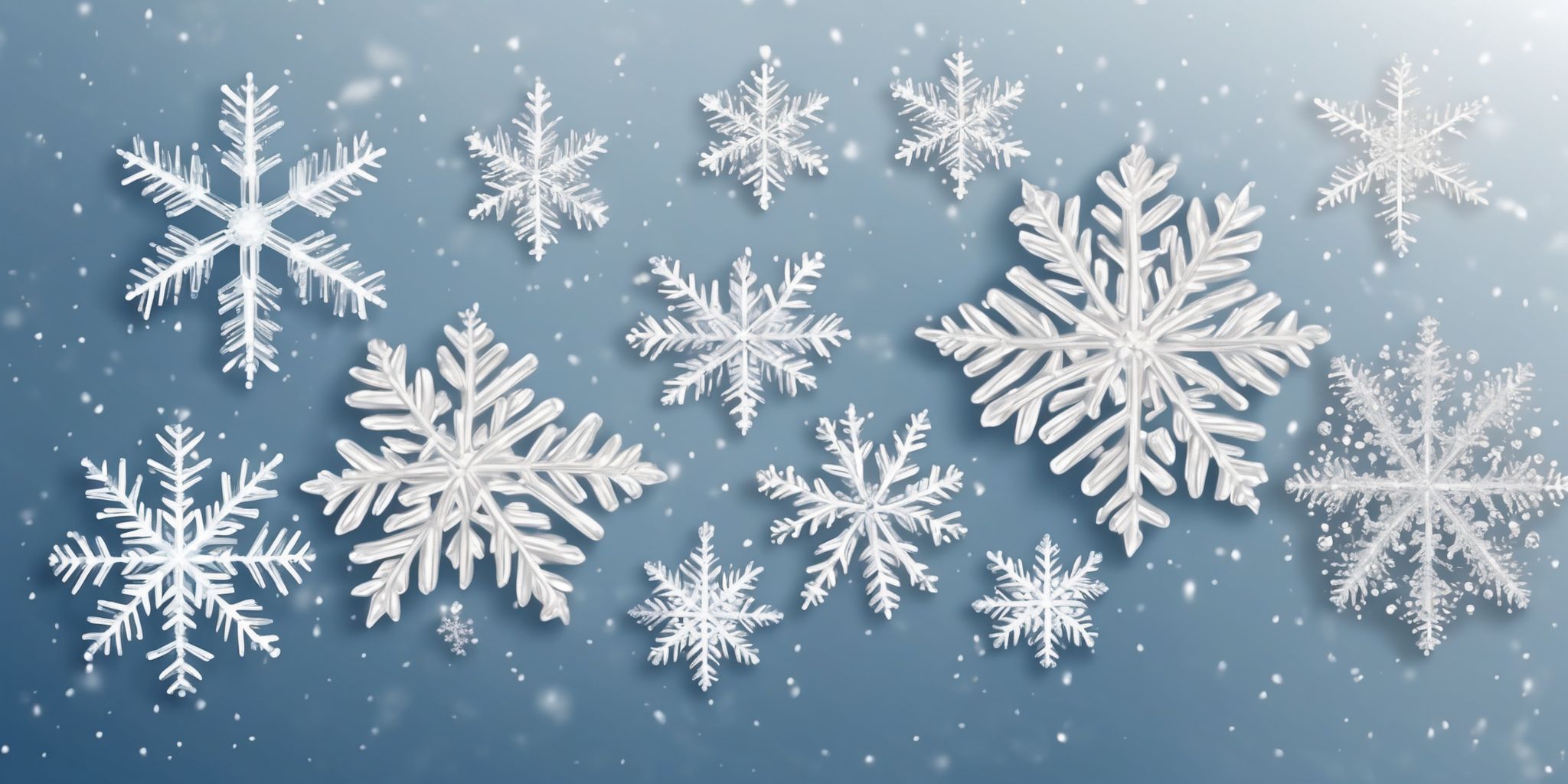- Blog
- Christmas questions
- How do different cultures celebrate the arrival of Santa Claus or similar gift-bringing figures?

When winter arrives and frosty air fills the streets, millions of children around the world eagerly anticipate the arrival of a jolly old man bearing bundles of joy. Ah, yes, we're talking about none other than Santa Claus, known by countless different names and celebrated in diverse ways across cultures.
From hanging stockings by the fireplace to awaiting gifts from mysterious figures, the various traditions associated with Santa Claus or similar gift-bringing characters span continents and weave together a rich tapestry of folklore and festivity. So, let's embark on a delightful sleigh ride through different cultures as we explore how they celebrate the arrival of these beloved and generous beings.
Explanation of Santa Claus and Gift-bringing Figures
Santa Claus and similar gift-bringing figures play a central role in many cultures' Christmas celebrations. These figures are often depicted as jolly, bearded men who bring gifts to children on Christmas Eve. While the specifics may vary across different cultures, the underlying idea of a generous gift-giver remains consistent.
For example, in the United States, Santa Claus is believed to travel in a sleigh pulled by reindeer, while in parts of Europe, St. Nicholas or Father Christmas fulfills this role. Understanding and appreciating the significance of these figures helps us grasp the universal concept of giving and spreading joy during the holiday season.
Importance of Celebrating the Arrival of Santa Claus
The arrival of Santa Claus holds significant cultural significance in many parts of the world. It brings joy and excitement to both children and adults, creating a festive atmosphere during the holiday season. Celebrating Santa's arrival fosters a sense of community and togetherness, as families come together to exchange gifts and create lasting memories. It also encourages acts of generosity and kindness, as people embrace the spirit of giving during this time.
Whether it's leaving out cookiesand milk or writing letters to Santa, these traditions provide a sense of wonder and anticipation for people of all ages.
Cultural Celebrations Around the World
Christmas Questions
Christmas questions are a common part of the holiday season. People wonder about various aspects of Christmas traditions, celebrations, and the arrival of Santa Claus. These questions often arise from curiosity and a desire to understand different cultural practices. Some common Christmas questions include: "How do different cultures celebrate the arrival of Santa Claus?", "What are the origins of Santa Claus?", and "Why do some countries have different gift-bringing figures?".
Exploring these questions can provide valuable insights into the diversity of Christmas traditions and help foster a better appreciation for the customs of other cultures.
United States
In the United States, the arrival of Santa Claus during Christmas is eagerly anticipated. Children across the country await his visit to deliver gifts on Christmas Eve. Many households have the tradition of leaving out milk and cookies for Santa as a token of appreciation. Some families even participate in local parades or events where Santa makes appearances.
Additionally, Santa Claus can be found at shopping malls and community gatherings in the weeks leading up to Christmas, providing opportunities for children to meet him in person and share their wishes. Santa's presence is a beloved aspect of American Christmas celebrations, creating excitement and joy for both children and adults alike.
Europe
In Europe, the arrival of Santa Claus or similar gift-bringing figures is celebrated in diverse ways. In countries like the United Kingdom, children eagerly anticipate the arrival of Father Christmas, who delivers presents on Christmas Eve. In Germany, children eagerly await the arrival of Christkind, a angelic figure who brings gifts on Christmas Day. In the Netherlands, Sinterklaas arrives by boat in mid-November, accompanied by his helper, Zwarte Piet.
The festive traditions and customs surrounding the arrival of these gift-bringers vary across European countries, adding cultural richness and excitement to the holiday season.
Latin America
Latin America embraces various unique traditions and customs when it comes to celebrating the arrival of Santa Claus or similar gift-bringing figures. In countries like Mexico and Colombia, the holiday season kicks off with festive processions and colorful parades, where people dress up as "Los Reyes Magos" or the Three Wise Men. These parades often include music, dancing, and elaborate floats.
In Brazil, children write letters to "Papai Noel" and leave their shoes by the window, hoping to findthem filled with gifts the next morning. Latin American celebrations are characterized by vibrant street parties, fireworks, and delicious traditional foods, such as tamales and buñuelos.
Christmas Questions
"Christmas questions" often arise when exploring cultural celebrations and the arrival of Santa Claus. These intriguing inquiries spark curiosity and foster a deeper understanding of diverse traditions. For instance, one might wonder how different cultures incorporate their unique customs into the festivities.
Additionally, questions may arise about the origins of Santa Claus and the evolution of his image over time. By delving into these Christmas questions, individuals can broaden their knowledge and appreciate the rich tapestry of global holiday celebrations. Embracing these inquiries encourages a sense of cultural appreciation and can inspire new traditions or perspectives.
Asia
In Asia, the celebration of Santa Claus or similar gift-bringing figures varies greatly across different cultures. In Japan, for example, Christmas is seen as more of a romantic holiday, with couples exchanging gifts or going on dates. In South Korea, Christmas has gained popularity and is often celebrated with Christmas trees, gift exchanges, and festive decorations. In India, Christians celebrate Christmas with religious services, carol singing, and the exchange of gifts.
These cultural variations highlight the diversity of traditions and customs surrounding the arrival of Santa Claus in Asia.
Africa
In Africa, the celebration of Santa Claus or gift-bringing figures varies across different cultures. In some countries, such as Nigeria and Ghana, Christmas is predominantly a religious holiday with a strong Christian influence. However, the arrival of gift-bearing figures like Father Christmas or African Santa Claus can also be observed. These figures often visit homes and distribute gifts to children.
In other parts of Africa, such as South Africa and Zimbabwe, the concept of Santa Claus has been incorporated into traditional holiday celebrations, while retaining local customs and traditions. For instance, in some communities, Santa may be depicted wearing traditional African attire or arriving on a different transportation mode, like a camel or elephant.
Oceania
In Oceania, the celebration of Santa Claus or similar gift-bringing figures varies across the region. In countries like Australia and New Zealand, where Christmas falls during the summer, there are unique traditions like "Carols by Candlelight" and "Surfing Santas". In the Pacific Island nations, such as Fiji and Samoa, Christmas is marked by vibrant community gatherings, feasts, and exchanging gifts.
Local interpretations and adaptations of Santa Claus can be seen in the form of mythical figures or characters based on indigenous beliefs. These cultural celebrations add diversity and richness to the festive season in Oceania.
Christmas Questions
"Christmas questions" provide an opportunity for individuals to explore and understand different cultural traditions surrounding the arrival of Santa Claus or gift-bringing figures. These questions spark curiosity and promote intercultural dialogue during the festive season. For instance, asking about how Santa Claus is portrayed in various countries allows us to discover diverse interpretations and adaptations.
By delving into the significance behind these cultural celebrations, we can foster a deeper appreciation for global diversity. Engaging in Christmas questions can lead to cross-cultural understanding and create a more inclusive and connected global community, where traditions and customs are shared and celebrated.
Indigenous Cultures
Indigenous cultures have diverse ways of celebrating the arrival of gift-bringing figures during the Christmas season. These traditions often intertwine with ancient folklore and spiritual beliefs. In some Native American tribes, for instance, the figure of Santa Claus may be replaced by a mythical being like the "Gift Bringer" or "Winter Spirit," who symbolizes the renewal of life and the season's blessings.
These celebrations may involve storytelling, dance rituals, or communal feasts, emphasizing the importance of community and connection. Similarly, Indigenous cultures in other parts of the world have their unique interpretations and customs surrounding the gift-giving concept, reflecting their deep-rooted traditions and values.
Religious Celebrations
In religious celebrations, the arrival of Santa Claus or similar gift-bringing figures takes on different meanings. For Christians, the focus is often on the birth of Jesus Christ rather than Santa Claus. However, in some cultures, Santa Claus is incorporated into religious traditions, representing the spirit of giving and generosity.
For example, in certain Catholic countries, Santa Claus is known as Saint Nicholas and his arrival is celebrated on December 6th, honoring his role as the patron saint of children. Religious celebrations during this time often involve attending church services, praying, and reflecting on the religious significance of Christmas.
Evolution of Santa Claus Traditions
Influence of Coca-Cola on Santa's Image
Coca-Cola's marketing campaigns in the 1930s played a significant role in shaping the modern image of Santa Claus. Through its iconic advertisements featuring a jolly, red-suited Santa, Coca-Cola popularized the idea of Santa as a cheerful gift-giver with a rotund figure. This depiction, heavily influenced by the company's branding, has become ingrained in the collective imagination and has been widely adopted by various cultures around the world.
The impact of Coca-Cola's portrayal of Santa Claus demonstrates the power of effective marketing in shaping cultural icons and traditions.
Local Interpretations and Adaptations
Local interpretations and adaptations of Santa Claus traditions vary widely across cultures. In some regions, Santa Claus takes on characteristics that reflect local customs and folklore. For instance, in countries with a strong indigenous culture, Santa may be depicted with traditional clothing or incorporate elements from local mythology.
Additionally, Santa's mode of transportation can also differ, with some regions replacing reindeer with animals native to the area. These adaptations allow communities to infuse their unique cultural identity into the celebration while maintaining the essence of gift-giving and spreading joy during the holiday season. By incorporating local traditions, Santa Claus becomes a relatable figure that resonates with the specific cultural context.
Wrapping up
Different cultures around the world have unique ways of celebrating the arrival of gift-bringing figures like Santa Claus. In some countries, Santa Claus is known by different names, such as Father Christmas or Saint Nicholas. For instance, in the United States, children eagerly await Santa's arrival on Christmas Eve and leave out cookies and milk for him. In other countries like Germany, children place a shoe or a boot outside their door, and if they've been good, St.
Nicholas will fill it with gifts. Meanwhile, in the Netherlands, Sinterklaas arrives by boat and parades through the streets, accompanied by his helpers, the Zwarte Pieten. Each culture has its own traditions and rituals that add a special touch to the excitement surrounding these beloved figures who bring joy and presents during the holiday season.
Read On

Exploring Different Xmas Traditions Around the World: From Santa Claus to Krampus
'Tis the season to be jolly, and as December rolls around, the festive spirit sweeps across the...

How do different cultures and religions celebrate Christmas?
Christmas is a time of joy, merriment, and festivity that transcends borders and brings people...

How do various cultures incorporate folklore and legends into their Christmas celebrations?
As the holiday season approaches, twinkling lights and festive decorations adorn streets worldwide,...